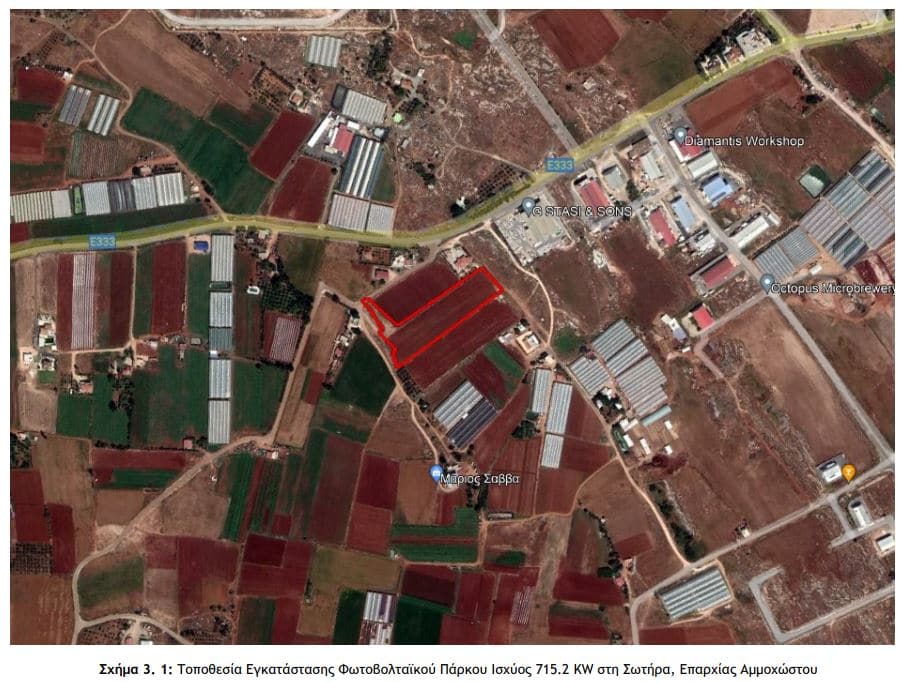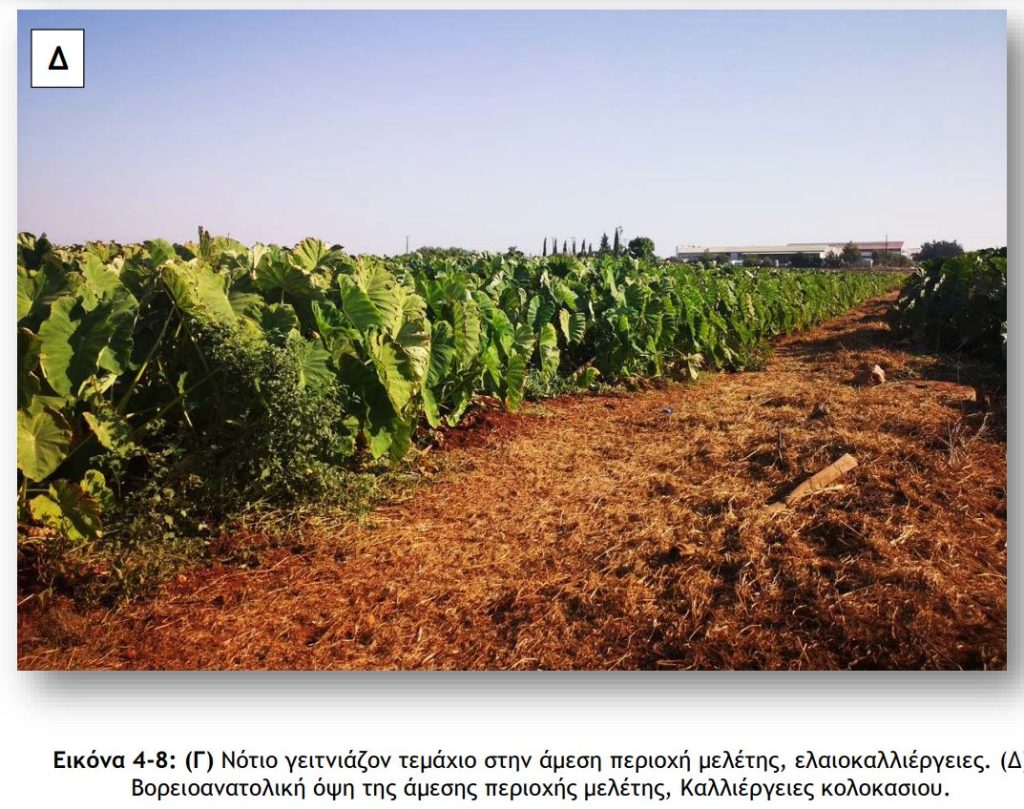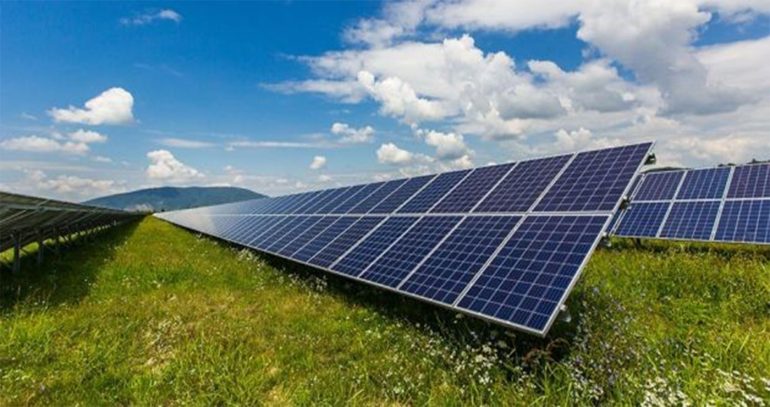The first (Agro) Photovoltaic Park in Cyprus, which will combine the installation of photovoltaics and the simultaneous exploitation of land for agricultural cultivation (pumpkins), plans to build a private company in Sotira Famagusta, which has submitted to the Department of Environmental Study Assessment Assessment which is open for consultation until 20 February 2022.
Project description
The Photovoltaic Park, which will be installed in Sotira Community, Famagusta province (Figure 3.1), will generate 1,377 MWh / yr (1,925 kWh / kWp) and will include 1,882 panels, power 380 W each, with a total installed power of 715.2 K. The orientation of the Photovoltaic Park will be south and the horizontal slope of the panels will be 12th
The development will take place in block 112 Φ / Σχ 0 / 2-284-377 as shown in Figure 3.2, surface 9,905 m2
The Photovoltaic Park will be connected to the electricity distribution network of the Cyprus Electricity Authority. This project is the first (Agro) Photovoltaic development in Cyprus, allowing the dual use of land, both for energy production and for cultivation (pumpkins) in the installation area.

Selection of photovoltaic systems
The technology of energy utilization of solar radiation with the use of photovoltaic cells is selected for the implementation of the proposed unit of electricity production from RES due to the significant advantages in relation to other RES technologies, but also the conventional ones. It is noted that the proposed photovoltaic unit is the only mature technology for the exploitation of solar RES potential, with more than installed units in the world and an installed capacity of more than 400 GW.
Protection Options and Construction Works
Lightning protection will be installed in the PV Park, which will provide the greatest possible lightning protection from lightning strikes. Also, around the PV Park will be fenced and a security system will be installed to prevent the entry of unauthorized persons and to provide a high level of security of the facilities.
The completion period of the project is five months from the day of commencement of works.
In the area where the frames will be placed, if piling will not be possible, a flat work square will be formed, while the fenced area will occupy an area of approximately 10,000 m2. The configuration of the work squares includes the compaction of the surface using a roller and the coating with earth filling material to cover all the irregularities.
For the access to the PV park there is an internal road construction inside the plots where the development for the access of the trucks and the excavators will take place. If necessary, access to the plot under study will be improved. The volume of this work, however, will be limited.

During the Operation of the Project
Energy Consumption / Supply
The development of photovoltaic parks for the production of electricity (replacing conventional power plants) is in line with the modern model of sustainable development of the electricity sector, which requires zeroing, where possible, emissions to the environment and maximizing the conservation of natural energy resources.
Atmospheric Emissions
Taking into account the emissions from the operating power plants of the EAC and the fact that the energy production of the Photovoltaic Park will amount to 1,377 MWh per year, the project participation in the reduction of gaseous emissions (CO2) is of the order of 660 tons approximately annually.
Liquid and Solid Waste
Small quantities of municipal waste are expected to be generated because there will be no permanent staff in the area of the Photovoltaic Park but about every month staff will visit the site to check the electrical equipment and frames. The frames will be washed about 3 to 4 times a year. The water will be transported with the help of a tanker to the area of the PV Park.
Study area
According to Study, the location of the proposed project is located within the administrative boundaries of the Municipality of Sotira in the province of Famagusta. The location of the proposed project is surrounded by agricultural land near an industrial zone and individual houses and the presence of the photovoltaic park is likely to cause visual alteration of any significant space, as the wider area does not include any elements of particular aesthetic value.
In the study area, masonry harzvourgites (plutonium rocks) with limited dunitic and lersolithic occurrences are found. The study area is covered by terrace deposits (Pleistocene). The Nicosia Formation is of Pleistocene age (1,8 - 5 million years ago) and consists of fossilized gray or yellow marls and limestone sandstones. Detailed geological studies have shown that the rocks of the Kakkaristra Formation do not have a uniform distribution, but appear in places in various areas south of Nicosia, with a more characteristic and important appearance in the Kakkaristra gorge. That is why these rocks have been given the name "Kakkaristra Formation". This formation laterally transitions to the Athalassa Formation, with which it is the same age. In the area of Kakkaristra, the homonymous geological formation is about 15 meters thick. It consists at its base of fine-grained, brittle and layered limestone sandstones which are followed upwards by fossil marls with thin layers of sandstones and at the top lake limestone. From the study of the fossils of the formation, it appears that, for the most part, it was deposited in brackish water and the upper one in fresh water. The Kakkaristra formation is followed upwards by the Gentle Formation. The typical appearance of this formation is located on the homonymous hill that dominates the gorge of Kakkaristra. In this area the formation has a thickness of up to 65 meters and consists of horizontal layers of lake deposits, such as siltstones, cobblestones, marls, sands, as well as windswept sediments. It is Sicilian age, ie 700.000 to 1.000.000 years ago. The Gentle Formation marks the end of the sedimentation cycle in a hydrated environment in the Mesaoria basin.
The plot on which the proposed project will be erected is geologically included in the zone of Indigenous Sedimentary Rocks which consists of bentonites, volcanoes, melange, marls, chalks, limestones, limestones, limestones, limestones and limestones.
Famagusta.News
